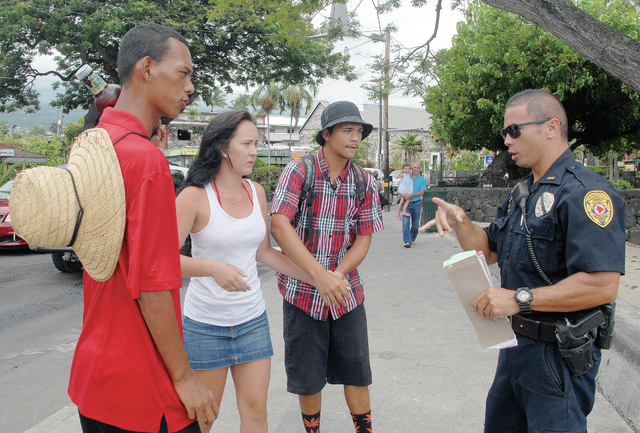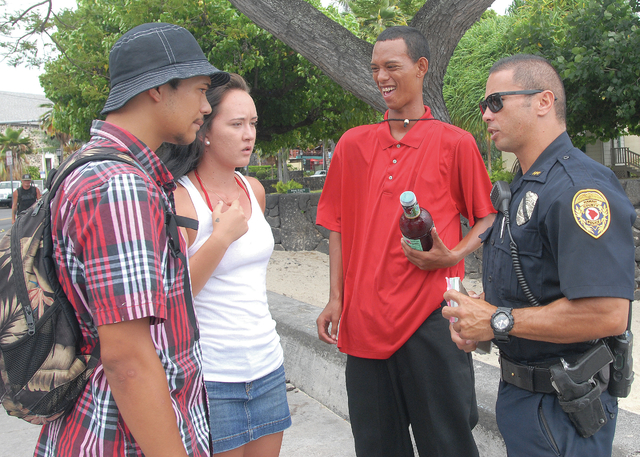KAILUA-KONA — Tensions between mainland law enforcement and their communities has ended in gunfire numerous times, with assaults on law enforcement jumping upward. ADVERTISING KAILUA-KONA — Tensions between mainland law enforcement and their communities has ended in gunfire numerous times,
KAILUA-KONA — Tensions between mainland law enforcement and their communities has ended in gunfire numerous times, with assaults on law enforcement jumping upward.
But in the wake of high-profile bloodshed, those tension haven’t seemed to touch the Big Island, where there have been no scheduled protests or demonstrations that have cropped up across the mainland.
In fact, recent West Hawaii Today interviews of the community found police report being thanked for their service more often and residents say their opinions on law enforcement have remained largely the same.
The interconnected nature of the island culture has also given a certain amount of stability, said Officer Ellsworth Fontes, who is currently assigned to the Hawaii Police Department’s community policing section.
Everyone has a family connection, he said, even if it’s through friends being related to a person.
There are other connections as well, like those that resident Sonny Kamanawa sees. The island culture is simply more relaxed than the mainland.
But that’s not a perfect preventative, he said. If the economy begins to decline, there could be more problems as people’s finances are already stretched.
Race and ethnicity divides, one of the other major tensions on the mainland, are not as present here, locals reported.
In a region like Baton Rouge, where Gavin Long killed three officers and wounded three more, the division is largely along a black/white divide. Other regions add in a Hispanic community, but the population of the U.S. is predominately white.
Not so on the Big Island, where the 2010 U.S. Census established there were 185,079 people. The single largest group was whites, with 33.7 percent, followed by 29.5 percent with two or more races, then Asian at 22.2 percent. Native Hawaiian or other Pacific Islander stands at 12.1 percent. Black residents comprise just 0.6 percent of the population.
And even those officers who might be considered white under a census definition may not think of themselves as such, said Officer Joseph Stender.
“I’d consider myself Hawaiian, although I’m probably equally Caucasian,” he said. That’s a cultural view that may be lacking elsewhere, he said.
Police officers queried by the newspaper reported that they were seeing people being more appreciative of their work recently.
They are seeing more support from the community, with “people thanking us for our service,” Fontes said.
Stender said a woman had called in to ask if she could bring over homemade pies and he has people thanking him two or three times a day.
Although Kona is largely pro-police, Fontes said, this is a more obvious response than they are used to.
“The only people who don’t love police are breaking the law,” said Fontes.
But Fontes and Stender were quick to note that being community policing officers changes their positions. They have time to talk with people and develop connections that patrol officers, who are dealing with a continuing cycle of calls, may not be able to do.
Even with the upswell in positive reactions, police work remains the same.
“We know anything could happen at any time. That’s why we wear the vests,” Fontes said, touching the strap holding up his body armor.
And the recent shootings across the nation show that’s possible.
Long and Micah Xavier Johnson, the shooter who killed five officers in Dallas, are both considered lone gunmen by authorities.
The Hawaii Police Department is not saying if there have been any changes in operations in response to the shootings, said Chris Loos, public relations specialist for the department.
She cited officer safety as the reason.




